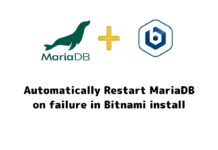The construction of virtual servers, infrastructures, devices and computing resources is known as virtualization. Virtualization changes the hardware-software relationship and is a key aspect of cloud computing technology that allows users to fully utilize cloud computing’s capabilities. Companies can virtualize their networks, storage, servers, data, desktops, and applications using virtualization techniques.
Virtualization Fundamentals
The partitioning of your hard drive into various pieces is an excellent example of how virtualization works in your daily life. While you may only have one hard disc, your computer views it as two, three, or even more distinct pieces. This technology, too, has been around for a long time. It began as the capacity to run different operating systems on a single hardware platform. It evolves into a critical component of testing and cloud computing.
The Virtual Machine Monitor, often known as a virtual manager, is a cloud computing platform that incorporates the fundamentals of virtualization. It is utilized to segregate the elements that imitate the physical hardware. Memory, I/O, and network traffic include frequently.
A secondary operating system that would normally communicate with hardware is now a software simulation of that hardware, and the guest operating system is often unaware that it is running on virtualized hardware.
Also Read: Web Based File Manager For Your Website Hosted On Cloud VPS
There are a few terms that links with virtualization that you should be aware of :
- Hypervisor: It is an operating system that runs on real hardware; the virtual equivalent is a running process that is part of this operating system. Domain 0 or Dom0 is the name given to hypervisors.
- Virtual Machine (VM): It is a virtual computer, executing underneath a hypervisor.
- Container: Containers are lightweight virtual machines that run on the same operating system instance as their hypervisor. They are a collection of processes that run alongside with the association of namespace for process identifiers.
- Virtualization Software: This is the software that aids in the deployment of virtualization on any computer device, whether it is a component of a software application bundle, an operating system, or a specific version of that operating system.
- Virtual Network: It is a network that is conceptually different within the servers and stretches across numerous servers.
Virtualization Characteristics
- Resource Distribution: Virtualisation, whether it is a single computer or a network of connecting servers, allows users to create a distinct computer environment from a single host machine, allowing users to restrict the participants as active users, scale down power usage, and have easy control.
- Isolation: Virtualisation software consists of self-contained virtual machines (VMs), which provide an isolation online, virtual environment to guest users. This online environment not only protects critical information but also allows guest users to stay in connection.
- Availability: Virtualisation software offers a variety of benefits that consumers won’t get on physical servers, like increasing uptime, availability, fault tolerance, and more. These features assist users in avoiding downtime. It reduces efficiency and productivity while also posing security and safety risks.
- Aggregation: As virtualisation allows numerous devices to share resources from a single machine. Its use is to bring together multiple devices into a single powerful host. Furthermore, aggregation necessitates cluster management software to connect a homogeneous set of computers or servers to create unify resource center.
- Authenticity and Security: Virtualisation technologies ensure continuous uptime by automatically balancing load. This load runs an excessive number of servers across numerous host machines to prevent service interruptions.
ARCHITECTURE OF VIRTUALISATION
The conceptual paradigm of virtualisation refers to as virtual architecture. Hypervisor-based virtualization is the most common type of virtualization. The hypervisor separates operating systems and applications from the underlying computer hardware. It allows the host machine to run several virtual machines as guests who share the physical computational resources. There are two kinds of them:
- Type one – Hypervisors, often known as bare-metal hypervisors, run directly on the host system hardware. They provide a high level of availability as well as resource management. It enables better scalability, stability, and performance by providing direct access to the system hardware.
- Type two – They’re also known as hosted hypervisors, and they’re put on top of the host OS. The hypervisor is not used by the guest’s virtual machines or operations systems. It facilitates system configuration as well as management activities. The addition of the host operating system, on the other hand, has the potential to reduce performance and disclose security weaknesses.
Advantages of Virtualization
Virtualization in cloud computing has the following advantages:
1. Security
Adoption of virtualisation aids by security concerns. Firewalls provide security by preventing unauthorised access to data and keeping it secure and secret.
- The firewalls give further protection against cyber threats and virus attacks.
- The protocols include end-to-end encryption, automatic data saving from other dangerous threads
- the ability for users to virtualize their data and make backups of the same data on another server when necessary.
2. Operation Flexibility
Users can work more efficiently with virtualization since the working process is more simplified and agile. Currently, the network switch in use is simple to operate, adaptable, and time-saving.
Virtualization can also aid in the diagnosis of technical issues that may arise in any of the connected devices. It eliminates the problems of keeping or recovering data lost due to damaged or crashed devices. It results in increased ROI and time savings.
3. Economical
This is the most important incentive for organisations to quickly adopt virtualization, since it allows them to control further spending on physical devices and servers.
Data can be obtained on virtual servers when working in a virtual environment. It also lowers expenses by reducing the intensive use of electricity (which has been a worry if several physical devices and services are being utilised at the same time), while executing the numerous components of an operating system and apps across the users’ and companies’ networks.
4. Flexible data transfer
Because data may be transferred to virtual servers at any moment and recovered, users and cloud providers do not have to waste time looking for hard drives to find data.
It is now much easier to allocate essential data and transfer it to the proper authorities thanks to the adoption of virtualization. Furthermore, there are no data transmission limitations and data can be transported across long distances with low expenses.
5. Remove the possibility of a system failure
While performing any function, it is common for a system to fail at a key time, resulting in a loss of resources and a deterioration of a company’s reputation.
Virtualization can defend against system failure by allowing users to do the same work on numerous devices at the same time, and the accumulated data can be retrieved at any moment from any device.
The Disadvantages of Virtualization
It may have a significant implementation cost.
When considering virtualization, the cost to the average person or business will be fairly minimal. However, the implementation expenses for virtualization environment providers can be fairly substantial. At some point, hardware and software will be necessary, which means devices will need to be designed, made, or acquired.
It is not without flaws.
Not every programme or server will function properly in a virtualized environment. As a result, a hybrid system may be required for an individual or company to function properly. This saves time and money in the long run. There is always an element of uncertainty when fully implementing this type of system because not every vendor supports virtualisation. Sometimes others may quit supporting it after initially starting it.
It poses a security threat.
Our current currency is information. You can make money if you have it. You’ll be ignored if you don’t have it. Because data is so important to a company’s success, it is routinely targeted. According to a survey issued by the Ponemon Institute, the average cost of a data security breach in 2017 was $3.62 million. To put things in perspective, the chances of being struck by lightning are approximately one in a million. What are the chances of a data breach while using virtualization? 1 out of every 4
It causes a problem with availability.
Many people’s main fear about virtualization is what will happen to their job if their assets are unavailable. An organization’s ability to connect to its data for an extended period of time will limit its ability to compete in its industry. With virtualization, the ability to stay connected is out of one’s control because availability is controlled by third-party suppliers.
It causes scaling problems.
Because of virtualization, you can grow a business or opportunity quickly, but you may not be able to grow as much as you’d like. When you initially start out, it may compell to be larger than you want to be. Growth causes slowness in a virtualized network since numerous entities share the same resources. There would be little anyone could do if one major presence took resources away from multiple smaller enterprises.
It necessitates the collaboration of multiple links in a chain.
If you have access to local equipment, you have complete control over what you can accomplish. Because numerous links must work together to execute the same activity, you lose control with virtualization. Let’s look at saving a document file as an example. You can save the file right away and even create a backup using a local storage device like a flash drive or hard drive. Your ISP connection must be valid in order to use virtualization. Your LAN or Wi-Fi connection must be operational. It would be necessary for your online storage option to be available. If none of these options work, you’re not saving the file.
7. It takes some time.
Although virtualization saves time during the setup phase, it costs users time in the long run when compared to native systems. This is due to the fact that there are additional procedures that must follow in order to achieve the desired result.
Cloud Computing vs. Virtualisation
Cloud computing, unlike virtualization, refers to the service that arises from the transformation. It refers to the use of the Internet to supply shared computing resources, SaaS, and on-demand services. The majority of the misunderstanding arises because, in the case of private clouds, virtualization and cloud computing work together to deliver distinct types of services.
Also Read: How to Enable PHP Zip Archive Module on GoDaddy’s Shared Hosting?
Virtualization Types in Cloud Computing
When discussing virtualization approaches in cloud computing, there are six methodologies to consider:
Virtualisation of Networks
In cloud computing, network virtualization is a means of combining available resources in a network by separating available bandwidth into multiple channels, each of which is distinct and distinct. They can allocate to a specific server or device in real-time, or they can remain fully unallocated. The theory is that the technology hides the network’s true complexity by breaking it down into manageable chunks. So its similar to how a segment hard drive makes it easier to manage files.
Storage Virtualising
The user can pool the hardware storage capacity from numerous networked storage devices into a virtual single storage device that manages from a single command console using this technique. In storage area networks, this storage approach employ frequently . By disguising the true and physical storage architecture, storage manipulation in the cloud is utilise usually for backup, archiving, and recovering data. Administrators can use software programmes or hardware and software hybrid appliances to implement it.
Server Virtualisation
The masking of server resources is a technique. It changes the identity, numbers, CPUs, and operating systems of physical servers to replicate them. This relieves the user of the burden of managing sophisticated server resources on a regular basis. It also makes a large number of resources available for sharing and use. it has the ability to grow them as needed.
Data Virtualisation
This cloud computing virtualisation strategy abstracts the technical details of data management. Such as location, performance, and format, in favour of broader access and greater resiliency that directly ties to business goals are some details.
Desktop Virtualising
This architecture allows you to imitate a workstation load rather than a server, as opposed to other types of virtualization in cloud computing. This enables remote access to the user’s desktop. Access to the workstation might be more secure and portable because it is essentially running on a data centre server.
Application Virtualization
In cloud computing, software virtualization isolates the application layer from the operating system. As a result, the application can execute in a sandboxed environment. It is independent of the operating system. Aside from offering a measure of isolation, an application designed for one Operating System can also run on another.
Conclusion
If a company decides to use the technology in its IT landscape, we recommend conducting a thorough analysis of its specific needs and capabilities, which handle best by specialists who can address costs, scalability requirements, and security requirements, as well as implement continuous development.
But keep in mind that none of these strategies or services are all-powerful or all-encompassing. Things can change at any time, just like any other technology, tool, or service a company uses.


























![The Apex Legends Digital Issue Is Now Live! Apex Legends - Change Audio Language Without Changing Text [Guide]](https://www.hawkdive.com/media/5-Basic-Tips-To-Get-Better-On-Apex-Legends-1-218x150.jpg)










